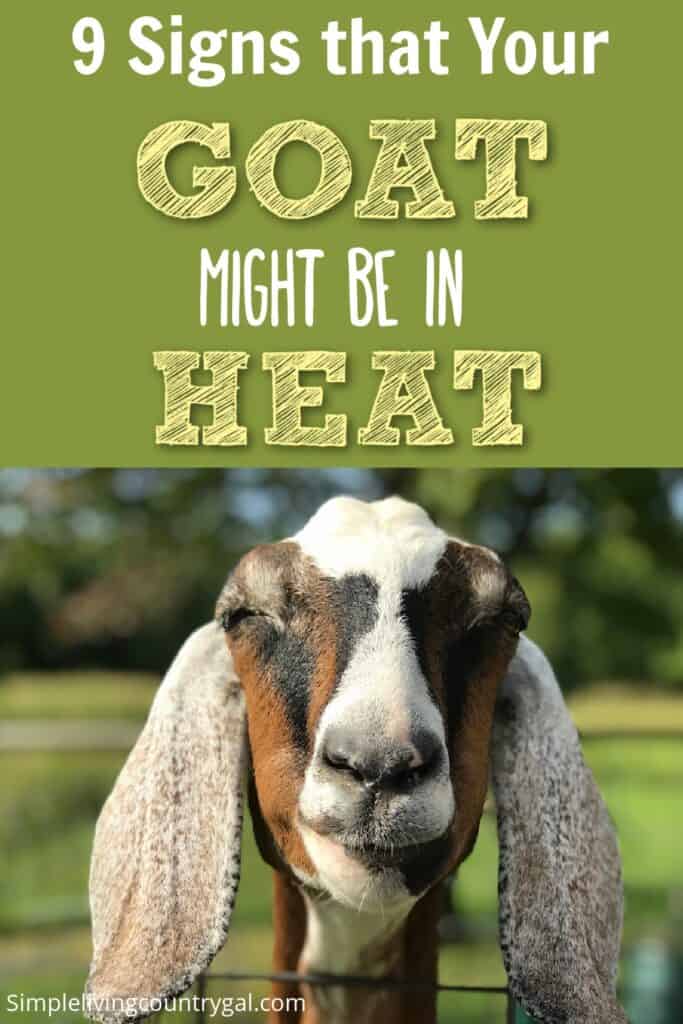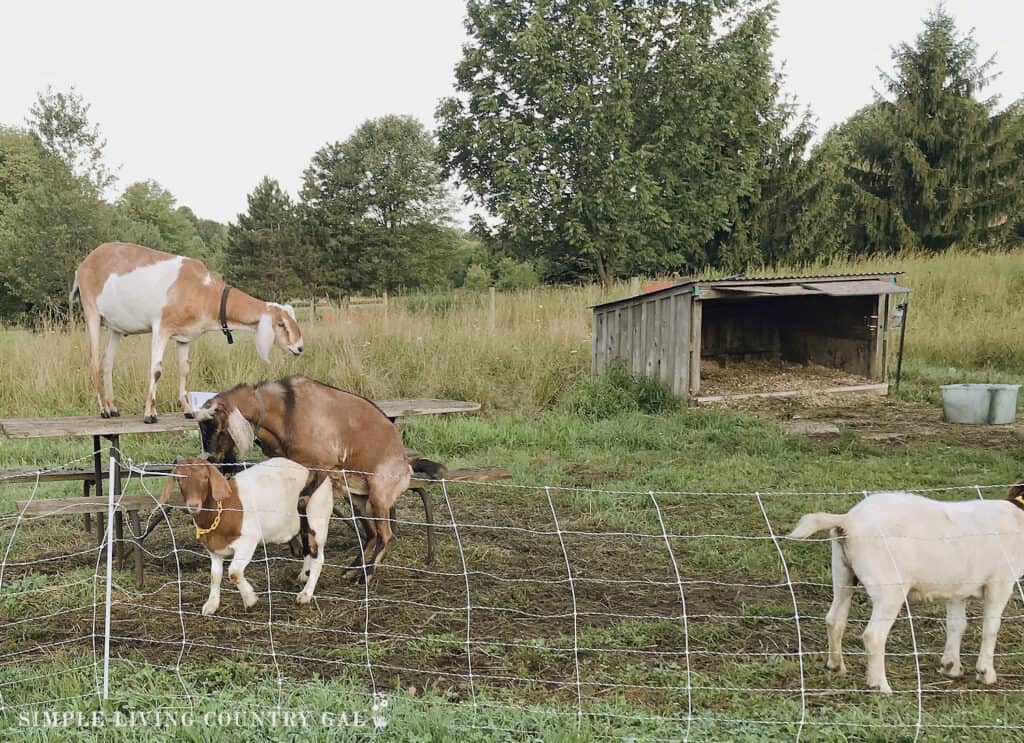signs of a goat in heat
If you have dairy goats, then breeding is a project you will want to do every fall. Breeding your goats in the fall will ensure you have kids each spring and a fresh supply of milk for most, if not all, of the year. To breed, you will need to know the signs of a goat in heat. This will help you to plan your bucks visits more accurately.
Knowing these signs will help you to have a more successful goat breeding season this year.

If you’re new to raising dairy goats, it can be tricky to recognize when your doe is ready for breeding. Knowing the signs of a goat in heat will help you to feel better prepared for breeding season. We will walk through the different physical signs during estrus as well as what time of year you should breed and how long gestation lasts. We’ll also look at a few tips you can use to prepare your does for breeding to help encourage a healthy gestation.
What is Estrus?
Estrus is the period of time when a doe will be fertile and ready to breed. During this cycle, her hormones are very active, and she may display certain physical signs. This is when a doe should be bred in order for successful conception to take place.
Signs of a Goat in Heat:
- Increased activity and restlessness – During estrus, goats will often become more active and restless. They may pace continuously, walk the fence line, or even try to jump to escape their enclosure.
- Flagging – When in heat, a doe will wag her tail like a dog would to help release her scent into the air to alert any nearby bucks. This tail wagging is known as flagging.
- Abnormal standing posture – During this time, the doe’s tail may lift almost to the point of arching to her back. She will also stand for extended periods of time with her hind legs spread apart in an inviting manner.
- Bleating – Does may bleat more frequently during estrus, and their voices may sound deeper than normal. Even goats that tend to be quiet most of the time will be vocal during heat.
- Swollen vulva – The doe’s vulva will swell during estrus, which is an indication that she is ready to breed.
- Sticky tail – You may also see discharge which can make the does tail look wet and feel sticky.
- Aggressive behavior towards other does – A doe in estrus may become aggressive towards other does, pushing them away or trying to mount them.
- Acting “bucky” – Does in heat may try to mount other does acting like a buck.
- Frequent urination – Does will urinate more often. Since there are pheromones in her urine, it will call in any bucks alerting them to her readiness to breed.

How often is a doe in heat?
A doe goes into heat every 21 days. Her reproductive cycle is only 12-36 hours. This is why it is important to know when your goats are in heat so you can have a greater chance of success when breeding.
How long is a goat’s gestation?
A goat’s gestation is anywhere from 145 to 155 days, with the average being 150. to have a better idea of when kids are due, you will want to watch the breeding and mark down the dates each time your goat and buck “connect”.
What should I do if my goat is not in heat?
If you find that your goat isn’t in heat, it could be due to several factors. Stress, age, health issues or even the time of year can all play a role in whether a doe goes into estrus. If your doe doesn’t seem to be in heat, it may be worth consulting with a vet or breeder for advice on how to encourage her reproductive cycle.
Knowing the signs of a doe in heat and understanding her reproductive cycle is key to successful breeding. Not only will this help you plan for when kids are due, but also give you an idea of how often your goats can breed. With a little practice and patience, you’ll soon be able to recognize the signs of estrus in your does and have more success when breeding.
